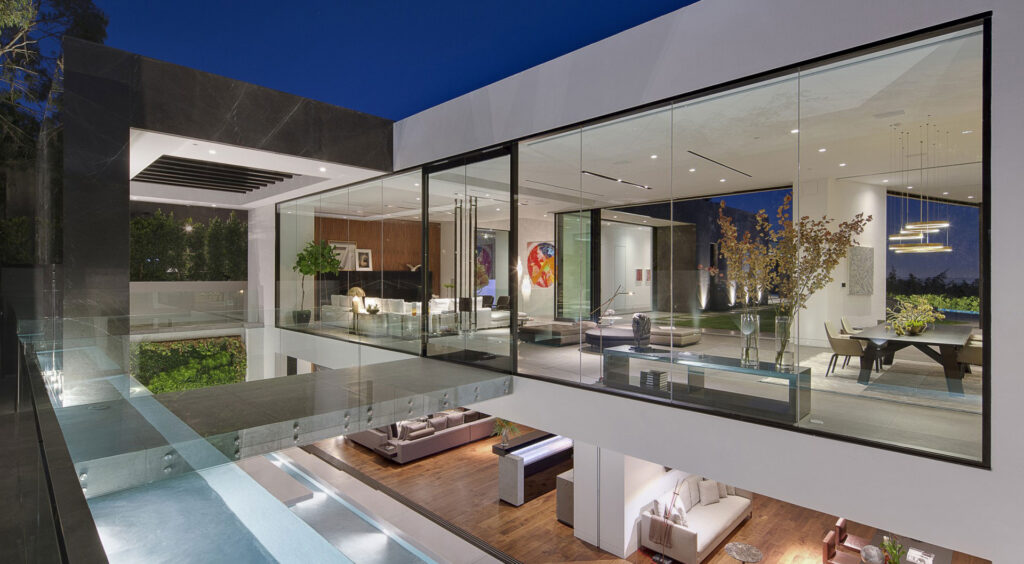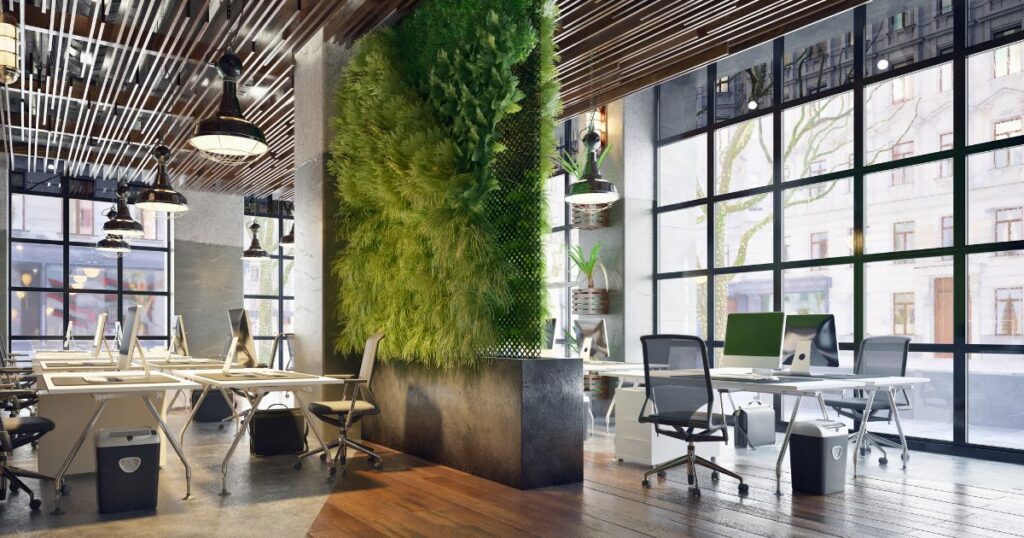Modern interior design has evolved significantly over the years, with a noticeable shift towards creating open, airy spaces that blur the boundaries between different areas within a home or commercial setting. Gone are the days of traditional, closed-off rooms; today’s interiors embrace transparency, fluidity, and a connection with the outdoors. This trend is driven by a desire to maximize space, enhance natural light, and foster a sense of openness and freedom within living environments.
One of the most impactful ways to achieve this sense of openness is by incorporating glass into the design. Glass, as a material, offers a unique combination of functionality and aesthetic appeal, making it an ideal choice for creating open spaces without sacrificing privacy or comfort.
The Versatility of Glass in Interior Design
Glass as a Functional and Aesthetic Material
Glass plays a dual role in interior design, serving both functional and aesthetic purposes. Functionally, glass allows for the distribution of natural light throughout a space, reducing the need for artificial lighting and creating a brighter, more inviting environment. It also offers soundproofing benefits, particularly when used in partitions and doors, making it possible to maintain a level of privacy and quietude even in open-plan settings.
Aesthetically, glass adds a modern, sophisticated touch to any interior. Its transparency and reflective qualities can make spaces feel larger and more open, while its versatility allows for a range of design possibilities. Various types of glass can be used to achieve different effects:
| Type of Glass | Description |
|---|---|
| Tempered Glass | Stronger and more durable, ideal for safety applications. |
| Frosted Glass | Provides privacy while allowing light to pass through. |
| Stained Glass | Adds color and artistic elements, often used in decorative windows. |
| Smart Glass | Can switch between transparent and opaque states for dynamic privacy. |
These types of glass can be integrated into various elements of interior design, offering both functional benefits and visual appeal.
Enhancing Natural Light with Glass
One of the most significant advantages of using glass in interior design is its ability to maximize natural light. Glass walls, doors, and partitions allow sunlight to penetrate deeper into a space, creating a warm and welcoming atmosphere. This is particularly beneficial in urban environments where natural light may be limited.
For example, using glass partitions in an office can create distinct workspaces while still allowing light to flow freely, reducing the reliance on artificial lighting and creating a more productive environment. Similarly, in residential settings, glass doors and windows can transform dark, confined areas into bright, open spaces that feel more connected to the outdoors.
Key Applications of Glass in Modern Interiors

Glass Partitions and Doors
Glass partitions and doors are among the most popular applications of glass in modern interior design. They offer a practical solution for dividing spaces without disrupting the flow of light or the sense of openness. In both residential and commercial spaces, glass partitions can be used to create defined areas, such as private offices, meeting rooms, or dining spaces, while maintaining a cohesive design.
Design tips for using glass partitions include incorporating frosted or tinted glass for added privacy, using floor-to-ceiling glass for a dramatic effect, and choosing frameless designs for a sleek, minimalist look.
Glass Walls and Windows
The trend of using full glass walls and oversized windows is growing in popularity, especially in contemporary architecture. These features help to blur the lines between indoor and outdoor spaces, creating a seamless transition that enhances the connection with nature. Large glass installations in living rooms, offices, or retail spaces not only provide stunning views but also increase the amount of natural light, making the space feel more expansive and inviting.
Glass Balustrades and Staircases
Glass balustrades and staircases are another example of how glass can add a touch of modernity and elegance to interiors. These elements are not only visually striking but also safe and durable when made with the right type of glass, such as tempered or laminated glass. Glass balustrades can be used around balconies, staircases, or even as part of mezzanine levels, offering unobstructed views and enhancing the overall aesthetic of the space.
The Impact of Glass on Perceived Space
Creating the Illusion of More Space
One of the most remarkable features of glass is its ability to create the illusion of more space. By allowing the eye to travel further, glass can make small or confined areas appear larger and more open. This effect is particularly useful in compact apartments or offices where maximizing space is essential.
Design strategies for using glass in small spaces include installing glass doors instead of solid ones, using glass partitions instead of walls, and incorporating mirrored glass to reflect light and further enhance the sense of space.
Maintaining Privacy with Glass
While glass is often associated with transparency, it can also be used to maintain privacy without sacrificing openness. Various treatments and finishes are available to achieve this, such as frosted glass, which diffuses light while obscuring the view, or smart glass, which can switch from transparent to opaque at the touch of a button. These options allow for a flexible approach to privacy, making glass a versatile choice for any interior.
Sustainability and Glass in Interior Design

Energy Efficiency with Glass
Modern glass technology has advanced to the point where glass can significantly contribute to a building’s energy efficiency. Low-emissivity (Low-E) glass, for example, is designed to reflect heat back into the room, reducing heat loss in the winter and keeping spaces cooler in the summer. This not only improves comfort but also reduces energy consumption and costs.
Eco-Friendly Glass Options
In addition to energy efficiency, glass can be an eco-friendly choice for interior design. Recycled glass and glass manufactured using sustainable processes are increasingly available, making it possible to incorporate environmentally responsible materials into interior projects. Furthermore, glass can play a role in achieving green building certifications, such as LEED, by contributing to sustainable design practices.
Incorporating glass into interior design requires careful consideration of factors such as cost, maintenance, and safety, but the rewards in terms of visual impact and functionality are well worth the effort. As we continue to explore new ways to design our living and working environments, glass will undoubtedly remain at the forefront of innovative interior design solutions.
